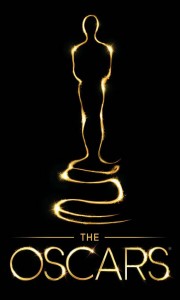The Oscars are coming on Sunday, Feb. 26, with a strong slate of nominees for Best Picture: “Arrival,” “Fences,” “Hacksaw Ridge,” “Hell or High Water,” “Hidden Figures,” “La La Land,” “Lion,” “Manchester by the Sea” and “Moonlight”.
 Maybe some of these will be like some of the films listed below – snubbed for the Best Picture Oscar, but enduring classics nonetheless.
Maybe some of these will be like some of the films listed below – snubbed for the Best Picture Oscar, but enduring classics nonetheless.
Here are some of the now classic films snubbed for Best Picture in their day:
Brokeback Mountain (2005)
“Crash” was 2005’s big winner. But a decade later Ang Lee’s “Brokeback Mountain,” a romantic drama about two gay ranch hands, is the movie everyone remembers. The ranch hands were played brilliantly by Heath Ledger and Jake Gyllenhaal.
Saving Private Ryan (1998)
Like Hitchcock, Steven Spielberg is a great director who has often been given short shrift by the Academy. Spielberg won the Best Director award for “Saving Private Ryan,” but the Academy Award for Best Picture went to the period comedy “Shakespeare in Love.” It was one of the biggest upsets in Oscar history.
Pulp Fiction (1994)
“Forrest Gump,” starring Tom Hanks, had its charm, but Best Picture? Many believe that award should have gone to Quentin Tarantino’s dazzling “Pulp Fiction,” a movie full of surprises and scenes at once frightening and hilarious.
Goodfellas (1990)
Nobody even talks about 1990’s Best Picture winner “Dances With Wolves” anymore, except to note that its Oscar should have gone to Martin Scorsese’s masterpiece, “Goodfellas.”
Tender Mercies (1983)
Exquisite and understated, this film is a small gem. Yet the Academy preferred the big-budget tearjerker “Terms of Endearment.” “Tender Mercies” star Robert Duvall did, however, win his first and only Oscar for his performance.
Taxi Driver (1976)
“Taxi Driver” is positively twisted. Martin Scorsese’s vigilante drama stood out as one of the most brilliant and original movies of the ’70s, a great decade for films in general. Sylvester Stallone’s “Rocky,” on the other hand, was strictly formulaic, though a rousing entertainment, and it won the Oscar for Best Picture.
The Graduate (1967)
One of the most groundbreaking and entertaining films of the ’60s, Mike Nichols’ “The Graduate” seduced an entire generation, just as Mrs. Robinson (Anne Bancroft) seduced Benjamin (Dustin Hoffman). But apparently no one clued in the Academy. On Oscar night, the award for Best Picture went to an old-school mystery, “In the Heat of the Night.”
To Kill a Mockingbird (1962)
This one isn’t so surprising when you remember the competition. “Lawrence of Arabia,” which won Best Picture and still stands up as a spectacular epic. Even so, it’s strange to think of the beloved “To Kill a Mockingbird” as one of the year’s losers.
Some Like It Hot (1959)
“Ben-Hur” swept 11 Oscar categories, including Best Picture, and its chariot races were undeniably impressive back in the day. But Billy Wilder’s “Some Like It Hot” never gets old. It ranks No. 1 on AFI’s list of the 100 funniest American movies. Not to mention it’s Marilyn Monroe’s best film.
Vertigo (1958)
In 2012, a poll of leading critics named Alfred Hitchcock’s psychological thriller “the greatest film of all time,” knocking “Citizen Kane” out of the top spot for the first time since 1962. Yet “Vertigo” received only two Oscar nominations, for sound and art direction, and it didn’t win either. The Academy’s pick for Best Picture was the musical, “Gigi.”
Rebel Without a Cause (1955)
“Rebel Without a Cause” is the masterpiece of director Jean-Luc Godard. It’s also the movie that defined James Dean. Yet the Academy Award for Best Picture went to a touching but now dated romantic drama, “Marty.”
Singin’ in the Rain (1952)
A musical that really deserved to win Best Picture, “Singin’ in the Rain” wasn’t even nominated for that award, which went to Cecil B. DeMille’s circus movie “The Greatest Show on Earth.” Stanley Donan’s classic – famous for Gene Kelly’s iconic dance scene – lost in the category of Best Musical Score to “With a Song in My Heart.”
Sunset Boulevard (1950)
Few would argue that “All About Eve,” the witty and engaging classic about an aging actress (Bette Davis) and the world of Broadway theater, didn’t deserve all nine of its Oscars. Even so, it’s hard to imagine Billy Wilder’s “Sunset Boulevard” – about another aging actress (Gloria Swanson) – failing to win Best Picture.
It’s a Wonderful Life (1947)
William Wyler’s “The Best Years of Our Lives,” about difficulties faced by GIs returning from World War II, was certainly of the moment when it won the Oscar for Best Picture. Today it seems pretty dated – especially compared to Frank Capra’s “It’s a Wonderful Life,” which remains a cultural touchstone, a perennial holiday favorite and AFI’s pick for the most inspirational film ever.
Double Indemnity (1944)
It’s the original film noir. Director Billy Wilder collaborated with Raymond Chandler on the screenplay, based on James M. Cain’s tale of a femme fatale (Barbara Stanwyck) and an insurance salesman (Fred MacMurray) plotting to kill her husband. But “Double Indemnity” was too dark for the Academy, which gave Best Picture honors to the warm and fuzzy Bing Crosby flick “Going My Way.”
Citizen Kane (1941)
This one is often called the greatest film of all time. But despite nine Academy Award nominations, Orson Welles’ “Citizen Kane” won only one – for screenwriting. Meanwhile, John Ford’s more sentimental “How Green Was My Valley” made off with five Oscars, including the awards for Best Picture and Best Director.
The Philadelphia Story (1940)
The Academy routinely snubbed Alfred Hitchcock, nominating him five times without giving the Master of Suspense a single Oscar for Best Director. The only Hitchcock film to be voted Best Picture was 1940’s “Rebecca,” a fine movie but not even one of his Top 10. “The Philadelphia Story,” one of the nominees it edged out, ranks No. 5 on AFI’s list of the all-time greatest romantic comedies, thanks partly to the magic combination of Katharine Hepburn, Cary Grant and Jimmy Stewart.
Snow White and the Seven Dwarfs (1937)
When Hollywood types got wind of Walt Disney’s plan to make an animated feature based on one of Grimms’ Fairy Tales, they dismissed it as “Disney’s folly.” It went on to become a critical and box-office sensation, and six decades later the American Film Institute (AFI) named “Snow White” the best animated movie ever. As for the Best Picture of 1937, the Academy gave that honor to a sober biopic, “The Life of Emile Zola.”
